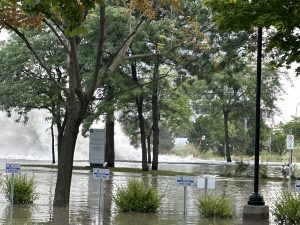There are currently two crises underway simultaneously. The advance of the novel coronavirus is taking a terrible toll in terms of physical and emotional well-being. At the same time, job losses resulting from ‘social distancing’ are sending the economy into a tailspin. To fight on both fronts, governments are advancing rescue packages of never-seen-before dimensions. Every day, the tremendous number of factors in play reconfigure in a new way. These ‘from the trenches’ notes attempt to shed some light along a murky pathway.
- The website ‘flightradar24.com’ (dashboard heading ‘Statistics’) records that the number of commercial flights globally (as a 7-day moving average) on March 12, 2020, was 101,297. From mid-March on, there was a rapid falling off, so that by April 12 (one month later), the figure had descended to just 29,442, a giant-sized drop of -71%. (‘Commercial’ flights are defined as passenger, cargo, charter and some business-jet flights. Excluded are glider, helicopter, ambulance and some military excursions.)
- Latest month-to-month airport departure statistics (number of actual flights) from ‘flightradar24.com’ show the following: Dallas-Ft. Worth International Airport, -59%; Chicago O’Hare, -66%; Atlanta Hartsfield Jackson, -69%; Los Angeles International Airport, -72%; New York John F. Kennedy, -81%; Montreal’s Pierre Elliott Trudeau Airport, -82%; Toronto’s Pearson International, -83%; and N.Y.’s LaGuardia, -92%.
- Cutbacks in the production of oil, agreed to by Saudi Arabia, Russia and some others can’t come soon enough. The price of oil has dropped below zero. Hard as it may be to believe, producers are paying customers to take excess supplies of crude off their hands.
- A major problem for apartment buildings and office towers is how to maintain social distancing in elevators. A design change for future construction will most likely require the provision of more elevators. But what’s to be done in the meantime and with existing buildings to avoid long line-ups in lobbies? One solution may be to randomly set time frames when individuals can ride up and down. For example, person A can go up between 9:00 and 9:15 am; person B, from 9:15 to 9:30.
- Possession of certain time frames will come to be prized more highly than others. There’s hay to be made here. Apparently, in real lockup (i.e., prisons), the popularity of ramen noodles has raised them above cigarettes as a valued item in barter exchanges. On the outside, perhaps elevator vouchers with preferred time slots will take on similar quasi-currency status. Of course, this whole system of time allotment will also require enforcement by squads of elevator police. (Read this latest bullet point with the same degree of skepticism you’d bring to an article about last year’s harvest of pancakes.)
Read the previous article here: The Economy Under COVID-19: Notes from the Trenches – April 28, 2020.
Alex Carrick is Chief Economist for ConstructConnect. He has delivered presentations throughout North America on the U.S., Canadian and world construction outlooks. Mr. Carrick has been with the company since 1985. Links to his numerous articles are featured on Twitter @ConstructConnx, which has 50,000 followers.











Recent Comments
comments for this post are closed